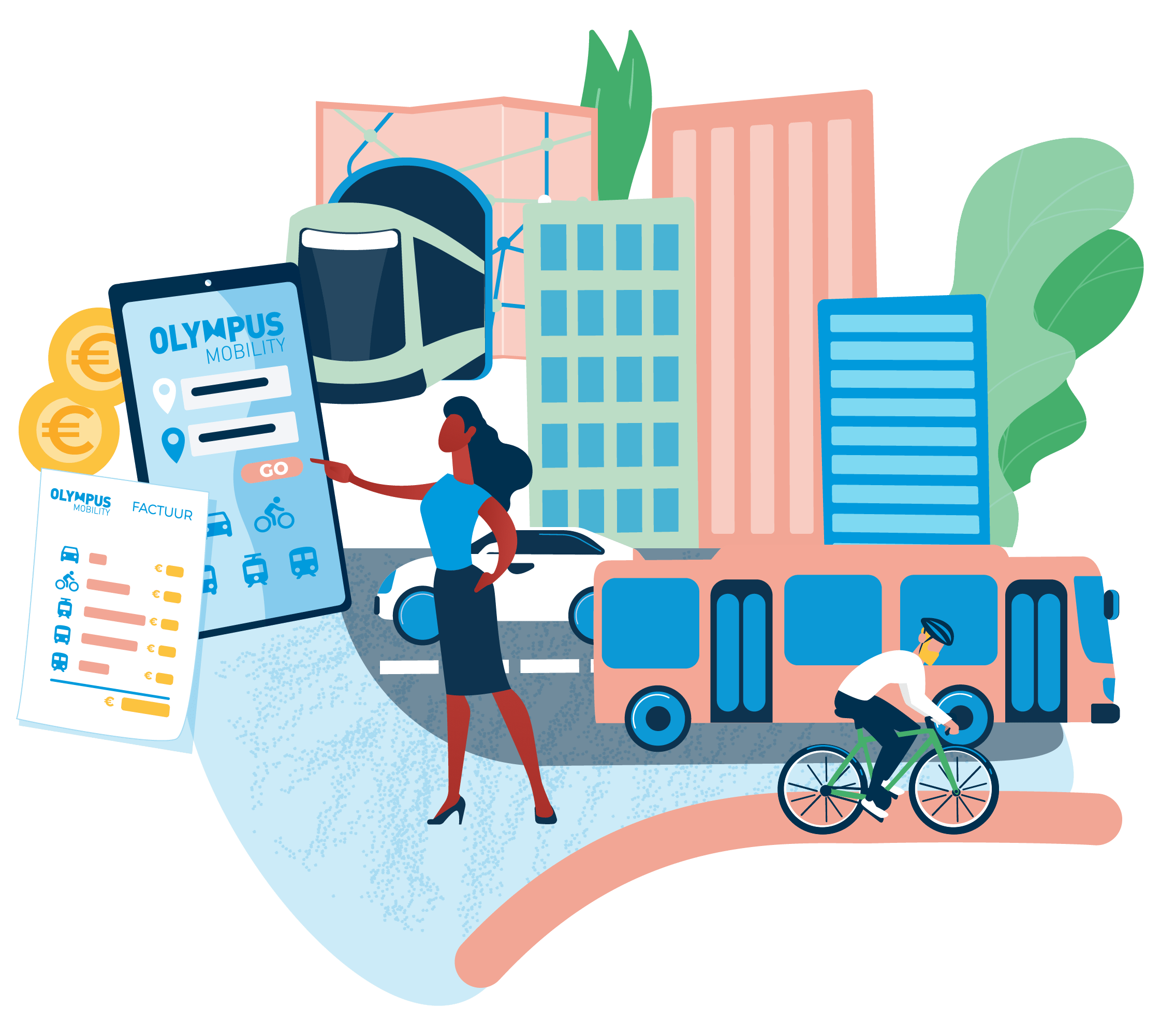- Daily & Weekly newsletters
- Buy & download The Bulletin
- Comment on our articles
The future of transport in our hands: Your smartphone is your mobility
Whatever the mode of travel, we all want to get around easily and sustainably, and these days we expect the world at our fingertips – literally. Step forward, Mobility as a Service.
The control we possess via the smartphone in our hands has already revolutionised, and is continuing to transform, the way we get from A to B.
How did you use your phone to get around today? By booking a train or bus ticket, finding e-bikes or scooters, organising a shared car, searching for live bus or tram information, hiring a taxi, or paying for parking? What if you could do all this in one place, with a single method of payment?
The change is already here. Combining technology with the burgeoning desire to travel more sustainably, flexibly and efficiently has given rise to a movement called Mobility as a Service (MaaS). It’s the idea that every type of transport solution can be found, planned, booked and paid for through one single app.
At mass consumer level it’s still a fledgling concept. The multi-location WHIM app – created by MaaS Global – currently only operates in one Belgian city, Antwerp.
The Brussels public transport operator STIB-MIVB is still at the early testing stages of a MoveBrussels app that it hopes will combine all transport options, and eventually payment, in one app.
MaaS Global says its dream is to give people a lot more freedom with their mobility and “create a world where you do not need to own a car to lead a fulfilling life”.
One-stop shop
While environmental impact is a massive influencing factor in MaaS, it’s not all about trying to eradicate the private car; it aims to make all the other options easier to take up and, wherever possible, preferable.
One Belgian firm grasped the concept early and has created a MaaS app that it’s marketing to businesses, who then provide the service as a benefit to their employees. Olympus Mobility was launched in 2015, after years of developing the idea and building partnerships with other companies and organisations in the market, such as the car-share scheme Cambio and the carpooling non-profit Mpact (formerly Taxi Stop).

There from the very beginning was chief executive Koen Van De Putte (pictured), who formed the idea following decades of experience with Belgian railways (SNCB), Cambio and Blue Bike. During his career he has been heavily involved in digitalising SNCB tickets and creating the multi-operator MoBIB card.
“The iPhone was launched in 2007 in Europe, and we started the Olympus project in 2010. We quickly saw that the smartphone would become very dominant for people because it puts them at the centre of the information,” says Van De Putte.
Via their app, users can access all public transport, a range of shared bikes and scooters, Cambio cars and parking services across Belgium. As well as offering the employee a one-stop shop, Olympus Mobility offers its clients – the employers – a single invoicing system.
“Employers want to give their employees broad access to mobility but they don't want the administrative hassle of making contracts with all the different mobility providers. So, we're delivering that to the companies – one access, one invoice and freedom for the employee,” he says. With algorithms that search for the cheapest tickets, they also promise to save companies money.
Traditionally, employee mobility benefits brought one thing to mind – the company car. This has been especially true of Belgium, where taxation of such benefits has been relatively low. New legislation means workers can swap that car entitlement for a "mobility budget" to spend on a greener vehicle or other modes of transport, among other things. In the case of Olympus Mobility, this budget can be loaded onto the app.

Seeking new solutions
Van De Putte cites one new client, the 3D printing company Materialise, which used to give a company car to nearly all its employees. In a short space of time, 25% have opted for the mobility budget, which he describes as “enormous”.
But could these new solutions ever spell the end of the road for the car?
“From the beginning, we said we will work with cars,” says Van De Putte. “All mobility can and must work together to make it easy. Let's be honest, a car is a fantastic means of transport – you get a lot of comfort. But it has a cost: it has a financial cost; it has a cost on the environment; it has a cost on society because you have a lot of traffic jams. The car alone is not a solution.
“Companies who want to be more sustainable are looking for other solutions for their employees. Not only from a point of view of sustainability, but also efficiency. Because people spend a lot of time in the car and it's mainly lost time. When I take the train, I open the laptop or phone and I'm working.”
Inevitably, there is an element of generational difference when it comes to changing attitudes to getting around, he has observed.
“Younger people are not so attached to having a car. There's still a big interest, but it's lower than before. And it's less important, because they have their smartphone – and that's their mobility.”
This article was first published on the Expat Time site of ING Belgium, July 2022


















